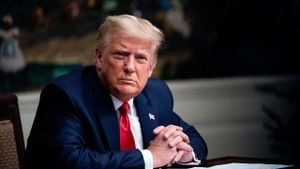On November 12, 2024, sports officials from Vietnam gathered in Hà Nội to discuss ambitious new strategies aimed at significantly enhancing the country's sports development by 2045. This conference set the stage for implementing the Việt Nam Sports Development Strategy until 2030, which envisions transformative approaches across physical education and sports as part of the nation’s broader ambition for health and quality of life management.
During the conference, Deputy Minister of Culture, Sports, and Tourism Hoàng Đạo Cương emphasized the need for sports and physical training activities to promote not only health but also the overall fitness and enjoyment of sports among the public. Cương outlined how the government has increasingly recognized the importance of sports, having enacted numerous documents aimed at directing and ensuring legal frameworks for the sector.
"This strategy marks the start of significant changes needed to optimize our sports program," said Cương. "Our objective is clear: to build a sustainable and professional sports industry by 2045. The focus will be on improving elite sports performance as well as increasing overall participation and access to sports for every citizen."
The Deputy Minister highlighted the dual nature of the upcoming challenges and opportunities the national sports sector would face, driven both by domestic factors and global sports trends. These changes call for innovative solutions to implement effective development plans.
Throughout the conference, various experts and representatives from sports federations, associations, and local governance provided insights and suggestions on optimizing the strategy. Their discussions brought attention to the sports economy's enhancement and strategies for increasing grassroots sports participation alongside elite sporting achievements.
"Hà Nội’s ambition includes making adjustments to all sports projects for both community and national levels," stated Đỗ Đình Hồng, Director of the Hà Nội Department of Culture and Sports. "The city is committed to facilitating significant sporting events like the Asian Games and Olympic Games through enhanced local sports infrastructures."
One of the core points raised was the necessity for mobilizing resources effectively within the sports economy. It was emphasized how enhancing the market for sports intersected with promoting public access, ensuring every citizen can engage with and benefit from physical activity.
Further discussions ensued about the steps needed to evolve Vietnam’s sports environment and the importance of unity among different stakeholders. With active participation, the conference sought to refine and strategize the goals needed to propel Vietnam’s sports industry forward.
Upon concluding the discussions, Deputy Minister Cương appreciated the proactive stances taken by various sectors involved, and he expressed hope for the comprehensive positive impact the strategy may have on Vietnamese sports. "Implementing this strategy is just the beginning of what is destined to be a long and winding road," he noted. He called upon ministries, localities, and businesses to remain engaged and support the national sports vision.
The exciting future of Vietnamese sports is set to hinge on collaborative efforts driving the country's health, fitness, and recreational goals. With concerted effort, Vietnam aims to cultivate thriving sports culture and international recognition by 2045.



